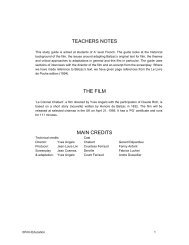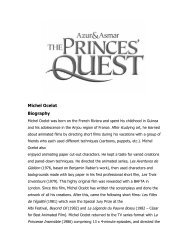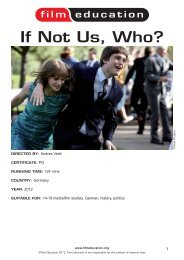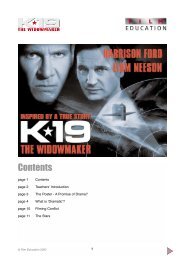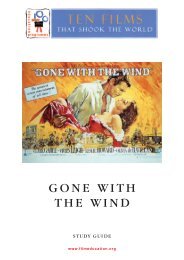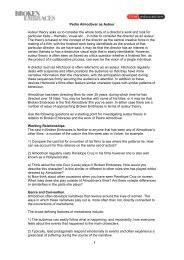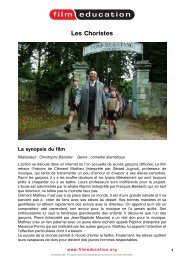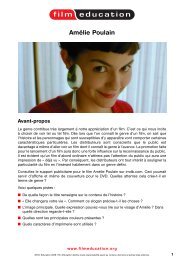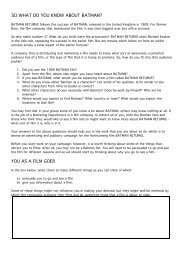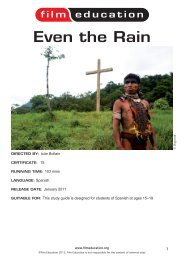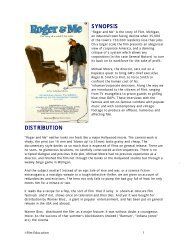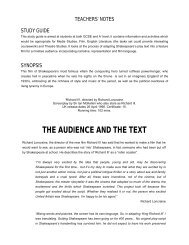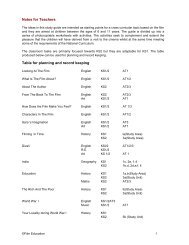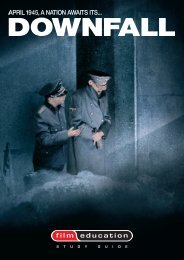Holes study guide - Film Education
Holes study guide - Film Education
Holes study guide - Film Education
Create successful ePaper yourself
Turn your PDF publications into a flip-book with our unique Google optimized e-Paper software.
LESSON 1: STORYBOARDING<br />
Coverage: chs 1-7<br />
(symbolism, imagery and visualisation)<br />
Read these initial chapters of <strong>Holes</strong> and discuss the themes and imagery that become<br />
apparent in the first part of the book, for example how is Camp Green Lake described and<br />
why is this at odds with its name?<br />
Now read the following information about storyboarding and complete the task.<br />
Storyboarding<br />
Storyboarding is a process of visualising<br />
written text, with technical camera<br />
details added, to allow a director to<br />
convey his intentions on how he would<br />
like to film a particular scene. It looks<br />
rather like a comic-strip.<br />
Some of the technical information will<br />
refer to action, camera direction and<br />
lighting.<br />
Angles<br />
● straight-on angle<br />
● high angle (the camera looking down<br />
on its subject)<br />
● low angle (the camera looking up at<br />
its subject)<br />
Think about the affect that using these differently will have on the shot (will it emphasise the<br />
vulnerability of the subject if the camera is at a high angle looking down?)<br />
Level<br />
● level camera shot (where the horizon is horizontal)<br />
● tilting<br />
● panning<br />
© <strong>Film</strong> <strong>Education</strong> 2003<br />
What you can see What you can hear<br />
8<br />
STORYBOARD



